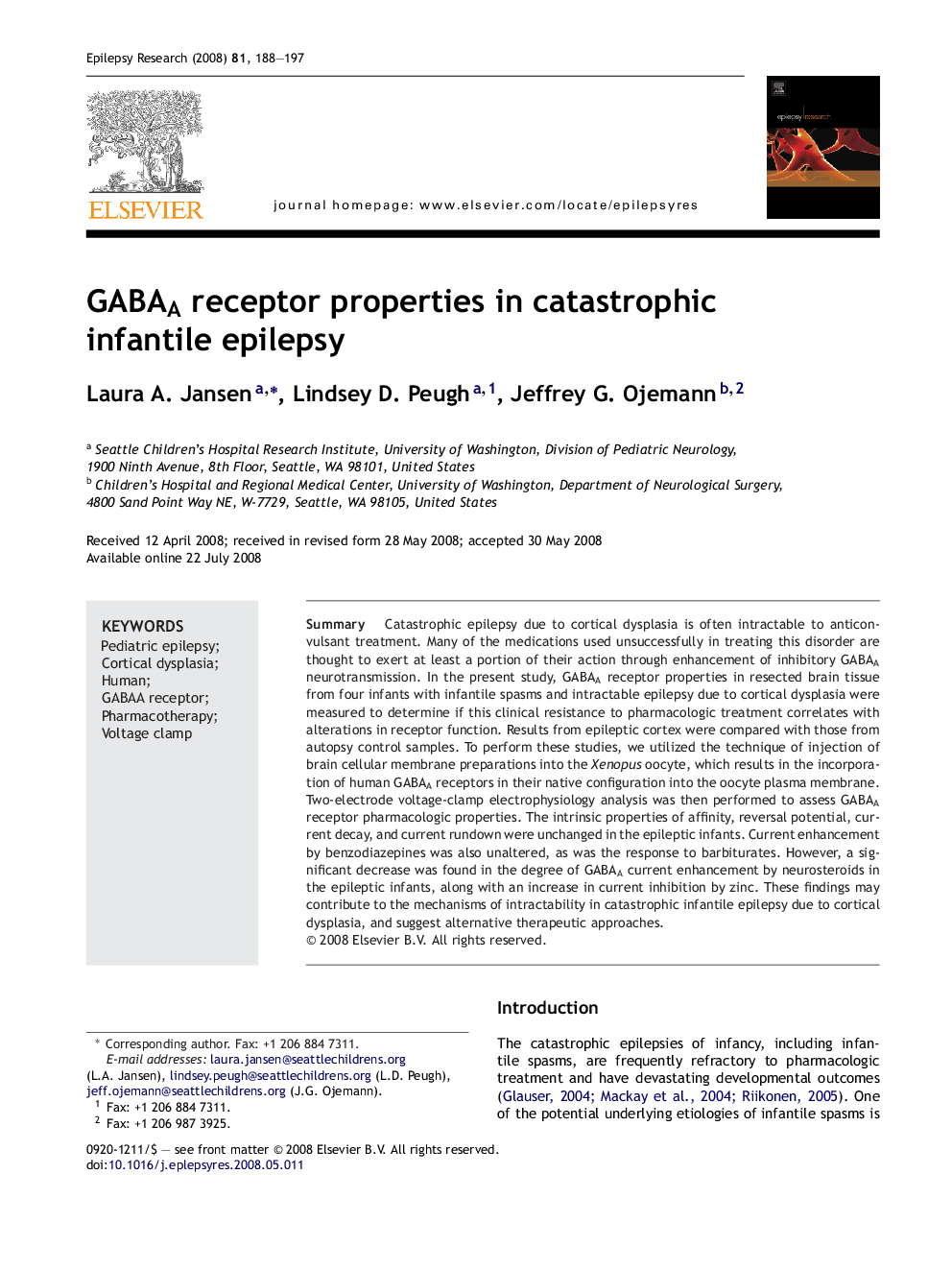| Article ID | Journal | Published Year | Pages | File Type |
|---|---|---|---|---|
| 6016348 | Epilepsy Research | 2008 | 10 Pages |
Abstract
Catastrophic epilepsy due to cortical dysplasia is often intractable to anticonvulsant treatment. Many of the medications used unsuccessfully in treating this disorder are thought to exert at least a portion of their action through enhancement of inhibitory GABAA neurotransmission. In the present study, GABAA receptor properties in resected brain tissue from four infants with infantile spasms and intractable epilepsy due to cortical dysplasia were measured to determine if this clinical resistance to pharmacologic treatment correlates with alterations in receptor function. Results from epileptic cortex were compared with those from autopsy control samples. To perform these studies, we utilized the technique of injection of brain cellular membrane preparations into the Xenopus oocyte, which results in the incorporation of human GABAA receptors in their native configuration into the oocyte plasma membrane. Two-electrode voltage-clamp electrophysiology analysis was then performed to assess GABAA receptor pharmacologic properties. The intrinsic properties of affinity, reversal potential, current decay, and current rundown were unchanged in the epileptic infants. Current enhancement by benzodiazepines was also unaltered, as was the response to barbiturates. However, a significant decrease was found in the degree of GABAA current enhancement by neurosteroids in the epileptic infants, along with an increase in current inhibition by zinc. These findings may contribute to the mechanisms of intractability in catastrophic infantile epilepsy due to cortical dysplasia, and suggest alternative therapeutic approaches.
Related Topics
Life Sciences
Neuroscience
Neurology
Authors
Laura A. Jansen, Lindsey D. Peugh, Jeffrey G. Ojemann,
